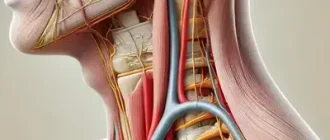The foot is made up of 26 bones, 33 joints, and over 100 muscles, ligaments, and tendons. Although this intricate composition enables a wide range of movements, it also makes the foot susceptible to different ailments.
What is Midfoot Pain?
Midfoot pain refers to discomfort or pain in the central section of the foot, including the arch. It involves the cuboid, navicular, and three cuneiform bones that form the arch of the foot along with its supporting muscles and tendons.
Causes of Midfoot Pain
The pain in the middle part of the foot can arise from:
- Sprains or Fractures: Injuries can result in sprains, stress fractures, or breaks in the midfoot bones.
- Arthritis: Osteoarthritis can wear away the cartilage, while rheumatoid arthritis can cause inflammation in the joints of the midfoot.
- Tarsal Tunnel Syndrome: When the tibial nerve is compressed, it can cause sensations of tingling, numbness, and pain in the middle part of the foot.
- Plantar Fasciitis: Pain can occur in the heel and arch region due to the inflammation of the plantar fascia, a ligament situated on the underside of the foot.
- Posterior Tibial Tendonitis: Overuse or injury to this tendon, which supports the arch, can cause swelling and midfoot pain.
| Cause | Effects |
|---|---|
| Sprains or Fractures | Pain, swelling, bruising |
| Arthritis | Chronic pain, reduced mobility |
| Tarsal Tunnel Syndrome | Tingling, numbness |
| Plantar Fasciitis | Heel and arch pain |
| Posterior Tibial Tendonitis | Swelling, midfoot pain |
Diagnosis and Treatment
Diagnosis involves a combination of physical examination, patient’s medical history, and imaging tests like X-rays or MRIs. The treatment depends on the underlying cause and symptom severity. It may involve conservative methods like rest, over-the-counter pain relievers, ice packs, supportive footwear, and physical therapy. In certain cases, steroid injections, custom orthotics, or immobilization devices may be prescribed. In severe or unresponsive cases, surgery might be necessary.
Prevention of Midfoot Pain
Preventing midfoot pain requires maintaining the overall health of the foot:
- Regular Exercise: Engage in exercises that strengthen the muscles and improve the flexibility of the foot.
- Supportive Shoes: Choose footwear that provides good support, particularly for the arches.
- Healthy Weight: Maintain a healthy weight to avoid excessive pressure on the feet.
- Regular Check-ups: Visit a podiatrist regularly, especially if there’s a history of foot diseases or injuries.
Midfoot pain can be a serious impediment, impacting mobility and quality of life. However, with accurate diagnosis and appropriate treatment, this condition can be effectively controlled, and in many cases, completely cured. Nevertheless, an ounce of prevention is worth a pound of cure, so one should not overlook the simple preventive measures that help maintain the health and functionality of our feet.
About the Author
Reyus Mammadli is the author of this health blog since 2008. With a background in medical and biotechnical devices, he has over 15 years of experience working with medical literature and expert guidelines from WHO, CDC, Mayo Clinic, and others. His goal is to present clear, accurate health information for everyday readers — not as a substitute for medical advice.







